In the relentless information storm of 2025, communication isn’t just another business function—it’s the differentiator between brands that thrive and those that merely survive. The stakes have never been higher: with $1.2 trillion lost annually to miscommunication in American businesses alone, mastering strategic communication has become the non-negotiable foundation of organizational success. Today’s stakeholders demand consistency across every touchpoint, yet a staggering 55% report disconnected experiences when interacting with companies. The most successful organizations have recognized this shift and transformed their approach accordingly. They understand that effective communication isn’t about broadcasting louder—it’s about connecting smarter. From crisis management to employee engagement, from brand storytelling to stakeholder relations, strategic communication has evolved from a supporting player to the conductor orchestrating business harmony. This comprehensive guide unpacks the essential frameworks, tools, and techniques that communication professionals need to navigate this complex landscape with confidence and purpose.
The Strategic Communication Revolution: Understanding the Core Framework
Strategic communication represents a fundamental shift from reactive, ad-hoc messaging to deliberate, goal-oriented interaction designed to advance organizational objectives. Unlike casual exchanges, it operates with precision and purpose—every word, channel, and timing choice carefully calculated to produce specific outcomes. This isn’t communication for communication’s sake; it’s a strategic business asset that drives measurable value.
The framework has evolved significantly in recent years, moving beyond simple transmission models to sophisticated multi-directional engagement strategies. Today’s approach recognizes that communication doesn’t happen in a vacuum—it exists within complex ecosystems where stakeholders simultaneously consume, create, and amplify messages across countless platforms.
At its core, strategic communication serves several critical functions that organizations cannot afford to overlook:
- Aligning internal teams around shared objectives and values
- Building trust and credibility with external stakeholders
- Differentiating brands in crowded marketplaces
- Navigating change and uncertainty with transparency
- Mitigating risks through proactive reputation management
Communication Mastery requires understanding that different scenarios demand different approaches. The framework encompasses several interconnected dimensions:
| Dimension | Purpose | Key Considerations |
|---|---|---|
| Organizational Identity | Defining who you are and what you stand for | Values, mission, vision, culture, positioning |
| Audience Analysis | Understanding stakeholder needs and expectations | Demographics, psychographics, communication preferences |
| Message Strategy | Crafting compelling, consistent narratives | Core themes, storytelling elements, proof points |
| Channel Selection | Choosing optimal platforms for delivery | Reach, engagement, control, measurability |
| Evaluation Methods | Measuring impact and optimizing approach | KPIs, analytics, feedback mechanisms, adaptation protocols |
The most significant evolution in recent years has been the transition from communication as a support function to communication as a strategic driver. Communication Innovators now sit at the leadership table, helping shape organizational direction rather than merely disseminating decisions after they’re made.
Organizations that fail to embrace this strategic mindset find themselves at a severe disadvantage. Their communications lack coherence and impact, creating confusion internally and eroding trust externally. In contrast, organizations that adopt systematic approaches experience 47% higher returns to shareholders, according to recent research by the Corporate Communication International Association.
What distinguishes merely adequate communication from truly strategic excellence? The difference lies in intentionality, integration, and measurement:
- Intentionality means defining specific objectives for every communication activity
- Integration ensures alignment across all touchpoints and channels
- Measurement provides accountability through concrete metrics tied to business outcomes
The modern framework also acknowledges that strategic communication must balance planned messaging with the agility to respond to emerging opportunities and challenges. This requires establishing clear protocols for both proactive and reactive scenarios while maintaining message consistency throughout.

Developing a Comprehensive Communication Strategy for 2025 and Beyond
Creating an effective communication strategy isn’t a one-time exercise but an evolving process that requires continuous refinement. The most successful Messaging Architects follow a structured approach while maintaining flexibility to adapt to changing conditions. Here’s how forward-thinking organizations are building their strategies in 2025:
Begin with a thorough situational analysis. This means taking an honest inventory of your current communication landscape—strengths, weaknesses, opportunities, and threats. Examine your organization’s communication history, previous successes and failures, and how your approach compares to industry benchmarks. This foundation provides critical context for strategic decisions.
Next, establish crystal-clear objectives that connect directly to broader business goals. Vague aims like “improve communication” lack the specificity needed for effective planning. Instead, objectives should follow the SMART framework: Specific, Measurable, Achievable, Relevant, and Time-bound. For example: “Increase employee understanding of our new sustainability initiative by 40% within six months, as measured by our internal knowledge assessment.”
The audience segmentation phase has become increasingly sophisticated in 2025. Rather than broad demographic categories, leading organizations now develop detailed stakeholder personas that capture not just basic information but deeper insights into information needs, communication preferences, decision-making factors, and potential objections. This granular understanding enables hyper-personalized messaging that resonates more effectively.
- Primary audiences: Those directly impacted by or able to take action on your message
- Secondary audiences: Those who influence your primary audience
- Tertiary audiences: Those who might observe your communication but aren’t direct targets
Message development forms the heart of your strategy. Construct a message architecture with three levels:
- Core positioning: The fundamental truth about your organization or initiative
- Pillar messages: 3-5 key themes that support your core positioning
- Supporting points: Specific evidence, stories, and data that validate each pillar
Channel selection has evolved significantly with the proliferation of platforms. The most effective strategies employ an integrated approach that leverages the strengths of different channels while maintaining message consistency. Consider not just where your audience is present, but where they’re receptive to your type of message. A real-time marketing approach has become increasingly vital for capturing momentary opportunities.
| Channel Category | Examples | Best Used For |
|---|---|---|
| Owned Media | Website, blog, email, internal platforms | Detailed content, relationship building, controlled messaging |
| Earned Media | Press coverage, reviews, social shares | Credibility building, amplification, third-party validation |
| Paid Media | Advertising, sponsored content, influencer partnerships | Targeted reach, visibility boosting, message control |
| Shared Media | Social platforms, communities, forums | Conversation, engagement, relationship building |
Implementation planning requires exceptional attention to detail. Develop a comprehensive timeline with clear ownership of tasks, dependencies, and milestones. Resource allocation—both human and financial—should be aligned with strategic priorities rather than historical patterns. The most effective organizations establish clear governance structures for communication approval, ensuring both quality control and necessary agility.
Finally, measurement and evaluation have become significantly more sophisticated. Leading organizations have moved beyond activity metrics (like impressions or click rates) to impact metrics that demonstrate actual outcomes. This includes changes in awareness, understanding, attitudes, behaviors, and ultimately, business results. Establish clear KPIs for each objective and regular review cycles to assess progress and make necessary adjustments.
Mastering Internal Communication: Building Organizational Alignment
Internal communication has undergone a profound transformation in recent years, evolving from simple information dissemination to a sophisticated practice that drives organizational performance. In 2025, leading companies recognize that effective internal communication directly impacts every business metric that matters—from productivity and innovation to retention and customer satisfaction.
The traditional top-down broadcast model has given way to multi-directional, conversational approaches that recognize employees as active participants rather than passive recipients. This shift acknowledges a fundamental truth: information alone doesn’t drive alignment; understanding and emotional connection do. The most effective internal communicators have become Strategic Dialogues facilitators rather than mere information distributors.
Several critical factors have accelerated this evolution. Remote and hybrid work models have permanently altered workplace dynamics, creating new challenges and opportunities for connection. Generational diversity has introduced varied communication preferences and expectations. Digital transformation has expanded the available channels while creating potential information overload. And heightened expectations for transparency and purpose have raised the stakes for organizational communications.
Successful internal communication strategies now address four essential dimensions:
| Dimension | Purpose | Key Elements |
|---|---|---|
| Informational | Ensuring everyone has access to necessary knowledge | News, updates, policies, procedures, business performance |
| Functional | Enabling effective job performance | Role clarity, priorities, feedback, operational coordination |
| Cultural | Building shared identity and connection | Values, purpose, recognition, community, shared experiences |
| Strategic | Fostering understanding of organizational direction | Vision, goals, market context, change rationale, progress tracking |
Channel strategy has become increasingly sophisticated, moving beyond the “one size fits all” approach to targeted, audience-centric models. The most effective organizations create cohesive ecosystems that integrate various tools based on their unique strengths:
- Digital workplaces and intranets serve as central information hubs, providing single sources of truth for organizational knowledge.
- Collaboration platforms like Slack, Microsoft Teams, and specialized tools facilitate real-time communication and work coordination.
- Mobile apps reach frontline and distributed workers who lack regular access to computers.
- Digital signage and environmental communications create immersive physical experiences in office spaces.
- Face-to-face forums, whether virtual or in-person, enable deeper dialogue on complex topics.
- Leadership communication channels build visibility and connection with senior leaders.
Message segmentation has also evolved significantly. Rather than broadcasting identical content to all employees, leading organizations tailor information based on relevance, role, location, and communication preferences. This precision reduces noise and increases engagement with critical content.
The role of leaders and managers in the communication ecosystem has received renewed focus. Research consistently shows that direct managers are employees’ most trusted and preferred information source. Effective internal communication strategies therefore place special emphasis on equipping managers with the tools, skills, and content they need to be effective communicators.
Building a Culture of Transparent Communication and Feedback
Transparency has evolved from a buzzword to a business imperative. Organizations with high transparency scores demonstrate 38% higher employee engagement and 29% lower turnover, according to the latest Workplace Transparency Index. However, transparency isn’t simply about sharing everything with everyone—it’s about thoughtful openness that builds trust while respecting necessary boundaries.
The most effective Brand Harmony approaches balance several sometimes-competing factors: employees’ desire for information, leaders’ responsibility for appropriate disclosure, and the organization’s need for operational security. This requires establishing clear principles for what information will be shared, when, how, and with whom.
Several practical approaches have proven effective in building greater transparency:
- Regular business updates that share organizational performance metrics and progress toward goals
- Decision explanation that provides context and rationale for significant changes
- “Ask Me Anything” forums where leaders address unfiltered employee questions
- Process transparency that makes visible how decisions are made, not just their outcomes
- Proactive problem acknowledgment rather than waiting for issues to become widely known
Feedback mechanisms represent the other half of the transparency equation. Communication can’t be truly transparent if it flows in only one direction. Leading organizations have dramatically expanded their approaches to gathering employee input through both structured and unstructured channels:
| Feedback Mechanism | Best Used For | Considerations |
|---|---|---|
| Pulse surveys | Regular temperature checks on specific topics | Keep short; ensure visible action on results |
| Digital feedback tools | Real-time input on communications and decisions | Integrate into existing platforms; moderate thoughtfully |
| Listening sessions | Deep exploration of complex topics | Create psychological safety; involve decision-makers |
| Employee advisory boards | Ongoing perspective from representative groups | Ensure diverse membership; provide meaningful influence |
| Idea platforms | Crowdsourcing solutions to organizational challenges | Close the loop on all submissions; recognize contributors |
The most important element in building a feedback culture is what happens after input is received. Organizations must “close the loop” by acknowledging what they heard, explaining what actions they’ll take as a result, and providing updates on implementation. Without this critical step, feedback initiatives quickly lose credibility and participation declines.
Measurement of internal communication effectiveness has become significantly more sophisticated. Leading organizations now track not just activity metrics (like email open rates or intranet visits) but impact metrics that demonstrate real business outcomes. These include knowledge retention, behavior change, process improvement, and ultimately, performance impact.
Technology has dramatically expanded the toolkit available to internal communicators. Advanced analytics provide unprecedented insight into communication effectiveness. Personalization engines deliver tailored content based on role, location, and interests. And artificial intelligence now supports everything from content creation to translation to sentiment analysis.
Despite these technological advances, the human element remains irreplaceable. The most effective internal communication balances digital efficiency with authentic human connection. This might include leader storytelling, peer-to-peer recognition, or community-building experiences that foster belonging. These personal touches create emotional resonance that purely digital approaches cannot replicate.
External Communication Excellence: Engaging Stakeholders Effectively
External communication has undergone a seismic shift in the past decade, dramatically altering how organizations engage with their diverse stakeholders. The linear, controlled messaging of the past has given way to dynamic, multi-directional conversations that organizations can influence but rarely dominate. This fundamental change requires a complete reimagining of external communication strategy.
The stakeholder landscape has expanded dramatically. Beyond the traditional focus on customers and shareholders, organizations must now effectively engage with communities, regulatory bodies, industry partners, advocacy groups, and influential individuals. Each stakeholder category brings distinct information needs, communication preferences, and relationship expectations that must be thoughtfully addressed.
Several major forces have accelerated this evolution:
- Platform proliferation has created countless channels while fragmenting audience attention
- Trust recalibration has shifted credibility from institutions to peers and independent voices
- Expectation escalation has raised standards for transparency, responsiveness, and authenticity
- Content democratization has enabled anyone to become a publisher or broadcaster
- Algorithm dominance has introduced new gatekeepers that determine content visibility
Successful external communication strategies in 2025 employ a stakeholder-centric approach that begins with deep audience understanding. Leading organizations develop comprehensive stakeholder maps that identify key groups, their information needs, influence levels, current perceptions, and desired actions. This foundational analysis guides all subsequent communication decisions.
Message architecture has become increasingly sophisticated, balancing consistency with customization. Organizations must maintain core positioning while adapting delivery to different stakeholder contexts. The most effective approaches employ tiered messaging frameworks:
| Message Level | Purpose | Application |
|---|---|---|
| Core Narrative | Defining organizational identity and purpose | Consistent across all audiences and channels |
| Stakeholder Propositions | Articulating specific value for each audience | Customized by stakeholder group |
| Supporting Messages | Providing evidence and examples | Adapted based on relevance and interests |
| Tactical Content | Addressing immediate needs and opportunities | Highly customized by context and channel |
Channel strategy requires exceptional thoughtfulness in today’s fragmented media landscape. The most effective organizations employ integrated approaches that leverage various platforms’ distinct strengths while maintaining message consistency. This includes balancing owned, earned, shared, and paid media in ways that create cohesive stakeholder journeys rather than isolated touchpoints.
Content strategy has evolved from periodic campaigns to continuous engagement models. Organizations must provide a steady stream of valuable, relevant content that earns attention rather than interrupting it. This requires establishing clear content pillars, developing efficient production processes, and building measurement systems that track performance across the full content lifecycle.

Building Authentic Brand Voice Through Strategic Storytelling
In an era of information abundance and attention scarcity, storytelling has emerged as the critical differentiator that transforms organizations from commodity providers to meaningful presences in stakeholders’ lives. The most effective Insightful Interactions employ narrative approaches that connect at both rational and emotional levels.
Brand voice development has become a strategic imperative rather than a stylistic nicety. Organizations must establish distinctive, consistent ways of communicating that reflect their unique identity and values. This goes beyond visual identity to encompass language patterns, tone variations, conversational styles, and narrative structures that stakeholders can immediately recognize as authentic to the organization.
Several essential elements contribute to effective brand storytelling:
- Purpose narrative that articulates why the organization exists beyond profit
- Origin story that humanizes the organization through its founding journey
- Customer transformation tales that demonstrate real impact through specific examples
- Challenge-solution arcs that frame organizational expertise through problem-solving
- Vision stories that paint compelling pictures of desired futures
- Values-in-action anecdotes that demonstrate principles through behaviors
The most effective organizations have moved beyond generic corporate narratives to more authentic, distinctive approaches that embrace their unique character. This might include appropriate vulnerability, specific perspectives on industry issues, or distinctive approaches to communication that differentiate them from competitors. This authenticity creates deeper connections with stakeholders who increasingly value transparency over perfection.
Voice consistency across multiple channels and touchpoints has become a significant challenge as organizations expand their digital presence. Leading companies establish comprehensive voice guidelines that provide clear direction while allowing necessary flexibility across different contexts. They also implement governance systems that ensure quality and consistency without creating excessive approval bottlenecks.
Visual storytelling has gained tremendous importance in communication strategy. Organizations now think beyond text to employ photography, video, data visualization, animation, and interactive experiences that engage multiple senses and learning styles. This visual dimension often communicates emotional qualities that are difficult to convey through words alone.
| Visual Element | Best Used For | Strategic Considerations |
|---|---|---|
| Photography | Human connection, emotional resonance | Authenticity vs. polish; diversity representation; consistent style |
| Video | Complex stories, demonstrations, testimonials | Production value appropriate to brand; optimal length by platform |
| Infographics | Data simplification, process explanation | Balance between information density and visual clarity |
| Interactive Content | Personalized exploration, deeper engagement | Intuitive user experience; device compatibility; value delivery |
Co-creation has emerged as a powerful approach to storytelling, with organizations inviting stakeholders to contribute their own narratives and perspectives. This participatory model creates more authentic content while building deeper community connections. From user-generated content campaigns to collaborative projects with advocacy partners, these approaches distribute both creative contribution and narrative control.
Measurement of storytelling effectiveness has evolved significantly. Beyond basic engagement metrics, organizations now track narrative comprehension, message attribution, emotional response, and behavior change that results from storytelling initiatives. These deeper metrics provide insight into not just reach but actual impact.
Technology continues to expand storytelling possibilities. Immersive formats like augmented and virtual reality create more profound experiences. Personalization engines deliver tailored narrative elements based on individual interests and behaviors. And artificial intelligence now supports content creation, optimization, and distribution in ways that enhance human creativity rather than replacing it.
The most successful Business Connect practitioners recognize that effective storytelling isn’t a marketing function but an organizational capability. They establish centralized resources and training programs that help employees across functions become more effective narrators of the organization’s story. This distributed approach ensures that every stakeholder interaction becomes an opportunity for meaningful narrative connection.
Crisis Communication Management: Navigating Challenges with Confidence
Crisis communication has undergone profound evolution in recent years, transformed by social media acceleration, stakeholder expectation shifts, and increasing global interconnectedness. What once unfolded over days now explodes in minutes. What remained local now instantly becomes global. And what organizations could once control now plays out on public platforms they can influence but never dominate.
This new reality requires fundamentally rethinking crisis communication approaches. The traditional playbook—characterized by careful information gathering, methodical response development, and tightly controlled messaging—has given way to more agile, transparent models that acknowledge both the speed of modern crises and stakeholders’ heightened expectations for authenticity.
Several critical factors have accelerated this evolution:
- Information velocity has compressed response windows from days to minutes
- Platform proliferation has created countless channels for crisis amplification
- Trust recalibration has shifted credibility from institutions to individual voices
- Expectation escalation has raised standards for transparency and accountability
- Boundary dissolution has blurred lines between internal and external communication
Effective crisis communication in 2025 begins long before any incident occurs. The most prepared organizations invest in comprehensive crisis preparation that includes several essential elements:
| Preparation Element | Purpose | Key Components |
|---|---|---|
| Vulnerability Assessment | Identifying potential crisis scenarios | Risk mapping, probability analysis, impact evaluation |
| Response Structure | Establishing clear crisis roles and processes | Team composition, decision protocols, activation triggers |
| Stakeholder Mapping | Understanding audience needs during crisis | Priority identification, information needs, channel preferences |
| Message Framework | Creating adaptable communication templates | Core statements, Q&A documents, adaptation guidelines |
| Simulation Training | Building team capabilities through practice | Scenario exercises, media training, decision-making drills |
When crises do occur, the most effective organizations follow systematic yet flexible response protocols. These typically include several phases, each with distinct communication priorities:
The Immediate Response phase focuses on acknowledging the situation quickly, even with incomplete information. Leading organizations issue initial statements within 15-30 minutes of crisis awareness, demonstrating they’re engaged even if details remain unclear. These early communications emphasize awareness, concern, and commitment to appropriate action rather than promising specific outcomes.
The Information Management phase involves establishing fact-gathering systems, developing message strategies, and implementing coordinated communication processes. Organizations must balance speed with accuracy, transparency with legal considerations, and proactive messaging with responsive engagement. Regular updates maintain stakeholder confidence even when complete resolution remains distant.
The Resolution and Recovery phase transitions from crisis management to reputation rebuilding. Communications shift from explaining what happened to articulating what’s changing as a result. This includes concrete actions to address root causes, prevent recurrence, and make amends to affected parties. Demonstrating genuine learning and substantive change is essential for rebuilding stakeholder trust.
Digital Crisis Management in the Social Media Era
Social media has fundamentally transformed crisis dynamics, creating both new vulnerabilities and new response capabilities. The most effective Effective Outreach practitioners have developed specialized approaches for digital crisis management that acknowledge these unique characteristics.
Real-time monitoring has become non-negotiable. Organizations must establish comprehensive listening systems that track conversations across platforms, identify emerging issues, analyze sentiment trends, and alert response teams to developing situations. The most sophisticated systems employ artificial intelligence to detect pattern anomalies and predict potential escalation paths.
Several essential principles guide effective digital crisis response:
- Platform-appropriate messaging that adapts content and tone to each channel’s unique context
- Visual communication that supplements text with graphics, video, and other formats that enhance clarity
- Direct engagement that responds to legitimate concerns rather than broadcasting one-way messages
- Influencer outreach that enlists credible third parties to help manage narrative development
- Search optimization that ensures accurate information appears prominently in crisis-related queries
Digital attacks require specialized response strategies. When facing coordinated criticism campaigns, organizations must distinguish between legitimate stakeholder concerns that warrant substantive engagement and manufactured outrage that may require different approaches. The most effective responses acknowledge genuine issues while avoiding amplification of inauthentic attacks.
Internal-external alignment has become increasingly critical in digital crisis scenarios. With organizational boundaries more permeable than ever, employees have become both potential vulnerabilities and potential advocates during crises. Leading organizations provide clear guidance about appropriate social media behavior during sensitive situations while also equipping employees with accurate information they can share when appropriate.
Post-crisis analysis has evolved significantly. Beyond traditional media coverage assessment, organizations now conduct comprehensive digital autopsies that examine conversation patterns, influence dynamics, narrative evolution, and long-term reputation impact. These analyses inform both immediate recovery strategies and longer-term crisis preparation improvements.
Technology continues to transform crisis communication capabilities. Advanced analytics provide unprecedented insight into developing situations. Simulation platforms enable more realistic crisis training. And artificial intelligence now supports everything from monitoring to message testing to response personalization. However, the most effective organizations recognize that while technology enhances crisis capability, human judgment remains irreplaceable for navigating complex stakeholder dynamics.
The legal-communication balance has become increasingly delicate in crisis scenarios. While legal considerations remain important, organizations have generally shifted toward greater transparency even when it creates short-term discomfort. Research consistently shows that stakeholders prefer honest acknowledgment of problems over defensive postures, and that organizations suffer greater reputation damage from perceived cover-ups than from the underlying issues themselves.
Real-time marketing approaches that typically focus on positive opportunities can be adapted for crisis scenarios, allowing organizations to respond with appropriate speed and relevance while maintaining message control.
Future-Focused Communication: Emerging Trends and Technologies
The communication landscape continues to evolve at unprecedented speed, driven by technological innovation, changing stakeholder expectations, and broader societal shifts. For forward-thinking organizations, understanding and adapting to these emerging trends isn’t just about staying current—it’s about gaining strategic advantage through early adoption of approaches that will soon become standard practice.
Several major forces are reshaping communication fundamentals in 2025 and beyond:
- Artificial intelligence integration is transforming content creation, personalization, and measurement
- Mixed reality experiences are blurring boundaries between physical and digital engagement
- Voice interfaces are creating new opportunities for conversational brand interactions
- Hyper-personalization is enabling unprecedented content tailoring based on individual preferences
- Decentralized technologies are introducing new models for content distribution and verification
Artificial intelligence has become deeply embedded in communication practice, moving beyond basic automation to sophisticated applications that enhance human capabilities. The most effective organizations have developed integrated human-AI workflows that leverage technology for efficiency while preserving essential human judgment:
| AI Application | Current Capabilities | Human Complement |
|---|---|---|
| Content Generation | Creating first drafts, variations, and adaptations | Strategic direction, creative concept, quality assurance |




